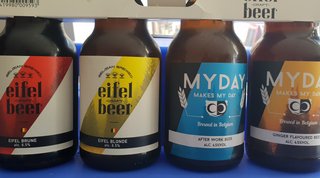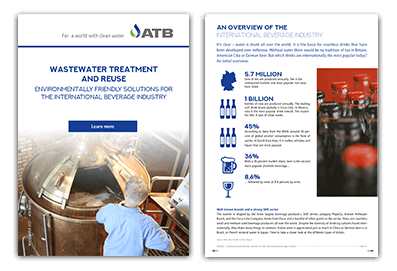Wastewater treatment and recycling in breweries
Brewery wastewater is generally polluted with two different classes of pollutants. In the direct brewing process, biological substances such as yeasts, starch or sugar compounds are increasingly introduced into the wastewater. By cleaning brewery plants (boilers, pipelines, etc.) and washing empties, large quantities of chemical cleaning detergents are also discharged into the wastewater of breweries.
Some large breweries use special wastewater treatment processes to recycle substances such as diatomaceous earth and return them to the production process. Wastewater treatment plants that significantly reduce the environmental impact of discharging wastewater into municipal wastewater systems (indirect discharge) are also becoming important in this context. This is often required by the operator of the municipal wastewater treatment plant.
In addition, this method is often very cost-effective, as breweries with their own wastewater treatment plants often save on very high discharge fees. Important parameters for brewery wastewater are nitrogen and biochemical oxygen demand (BOD).

Beer is a basic foodstuff – All over the world
At least that is how it is seen by millions of people around the world. By the way – the barley juice has not been created in Germany, but in ancient Egypt. The recipe has reached Germany by 4000 years old hieroglyphs – so indeed long before the Bavarian purity law came into being. Nowadays, each year, around 177 billion litres of beer are drunk globally. The leader is China, consuming more than 42 billion litres each year. What about per capita consumption? Europe remains at the top of the charts – as this top 5 shows:
1. Czech Republic: 191 litres
2. Austria: 107.6 litres
3. Germany: 101.1 litres
4. Romania: 98.9 litres
5. Poland: 98.2 litres


